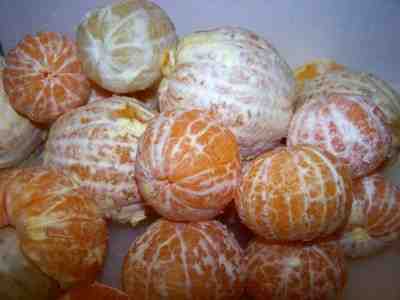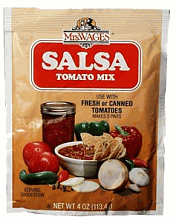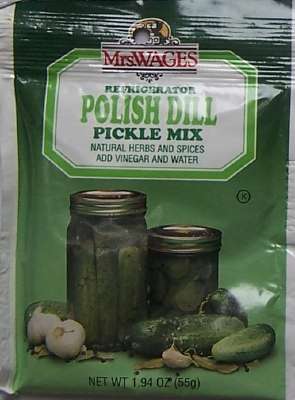
Looking for How to Make and Freeze your own Orange Juice, Grapefruit, Tangerine or Mandarin Juice in 2025? Scroll down this page and follow the links. And if you bring home some fruit or vegetables and want to can, freeze, make jam, salsa or pickles, see this page for simple, reliable, illustrated canning, freezing or preserving directions. There are plenty of other related resources, click on the resources dropdown above. If you are having a hard time finding canning lids, I've used these, and they're a great price & ship in 2 days.
If you have questions or feedback, please let me know! There are affiliate links on this page. Read our disclosure policy to learn more.
How to Make and Freeze your own Orange Juice, Grapefruit, Tangerine or Mandarin Juice
How to Make Homemade, Home-frozen Citrus juices: Orange Juice, Grapefruit,
Tangerine or Mandarin Juice
Making and freezing your own orange, mandarine, tangerine
or other citrus juice is easy. Here's how to make your own home
frozen citrus juice, with complete instructions in easy steps and
completely illustrated. The orange, or other juice will taste MUCH
better than anything you've ever had from a store, and by selecting
the right fruit. Prepared this way, the jars have a shelf life of 18 months to 2 years, and require no special attention.
Directions for Making Orange, Mandarin, Grapefruit, Tangerine or Other Citrus Juice
Ingredients
- Lemons, oranges, grapefruit, mandarins or other citrus (see step 1)
Equipment
- Jar grabber (to pick up the hot jars)
- Lid lifter (I like the lid rack that holds 12 lids or you can pull them out one at a time with the lid-lifter that has a magnet from the almost-boiling water where you sanitize them. ($4 at mall kitchen stores and local "big box" stores, but it's usually cheaper online from our affiliates)t)
- Jar funnel ($4 at mall kitchen stores and local "big box" stores, but it's usually cheaper online from our affiliates)t)
- At least 1 large pot (at least 8-quart size or larger)
- Large spoons and ladles,
- Freezing bags or containers
- Sieve:
- a simple metal or plastic sieve.
- colander
- juicer
- Filters - if you want filtered juice
- jelly bag
- cheesecloth
- coffee filters
Recipe and Directions
Step 1 - Selecting the fruit
The most important step! You should choose the best fruit you can get and make far better juice. Don't get me wrong, it is fine to use small fruit and less attractive varieties, as long as they are firm and unspoiled!
Step 2 - Where to get oranges, lemons or other citrus
You can pick your own, or buy them at the grocery store. But for large quantities, you will find that real* farmer's markets, like the Farmer's Market in Forest Park, Georgia have them at the best prices, like the Atlanta-Forest park Georgia State Farmer's Market and orchards in the Florida, Texas and California.
You will get about 12 to 20 quarts of lemon juice per bushel of lemons. Count on 15 or 16 quarts per bushel.
* - not the cutesy, fake farmer's markets that are just warehouse grocery stores that call themselves farmer's markets.
Step 3 -Wash and peel the lemons or oranges!
I'm sure you can figure out how to wash the fruit in plain cold water. If you have a juicer or squeezer, it obviously makes it much easier. If you don't have a juicer, don't fret, just peel the fruit (as shown in the photo), then chop or crush the fruit with a potato masher and continue to the next step.
Step 4 - Squeeze the fruit
Squeeze juice from fruit, using a squeezer that does not press the oil from rind (the oil has a bitter taste). If you have a juicer, you can use it on the peel fruit.
If you desire (I don't) you may sweeten with 2 tablespoons sugar, honey, Stevia (in a prepared form like Truvia, it measures same as sugar; if you use another form, you will need do your own conversion) - or Splenda, if you prefer, or whatever you prefer for each quart of juice; or do as I do and pack without sugar.
Step 5 - If desired, sieve the citrus
If you want pulp-free juice and you didn't use a juicer in step 4 that separates the pulp, you want to separate the liquid from the pulp (and seeds, stems, etc. ) There are quite a variety of ways to filter the lemons.
See here for related tools, equipment, supplies on Amazon See here for related tools, equipment, supplies on Amazon See here for related tools, equipment, supplies on Amazon
Unfiltered juice:
- I like a natural citrus juice, with the natural pulp of the fruit in it, so I just plop the oranges, lemons, grapefruit, etc. into a large metal or plastic sieve or colander or sieve, with holes small enough to trap seeds, but large enough to let the pulp through. Colanders seem to work best.
Filtered juice:
- Another way, if you want filtered pulpless orange or lemon juice, is just to line your sieve or colander with several layers of cheese cloth and let the juice drip through. It could take an hour..
- If you want really clear orange or lemon juice (but most people prefer "natural" style with some solids) you can strain the juice through a paper coffee filter place inside a sieve or colander.
- If you want more filtered orange or lemon juice, use a jelly bag. Just pour hot prepared fruit pulp into a jelly bag and let it drip. . Do not squeeze the bag.! In my experience this method takes forever.
Step 6 - Fill the jars
Pour juice into containers immediately. To avoid development of off-flavors, pack juice in glass jars. Leave 1/2 inch headspace.
Step 7 - Freeze the jars or other containers
Seal and freeze. Be sure the jars are upright. I leave the lids on loosely, until they freeze solid, then I tighten them. That helps to avoid breakage.
Other Equipment:
- Jar lifting tongs to pick up hot jars
- Lid lifter - to remove lids from the pot of boiling water (sterilizing )
- Lids- disposable - you may only use them once
- Ring - holds the lids on the jar until after the jars cool - then you remove them, save them and reuse them
- Canning Jar funnel - to fill the jars
 Granite Ware 21 QT, 9 Piece Enamelware Water bath Canning Pot with Canning kit, Colander and Rack VKP Brands Water Bath AND Steam Canner, 20 Quart Stainless Steel, flat-bottomed Induction range compatible and safe for smooth top ranges. 
|
Home Canning KitsSee the seller's website for more information, features, pricing and user reviews! This is the same type of standard canner that my grandmother used
to make everything from lemon juice to jams and jellies to tomato and
spaghetti sauce. This complete kit includes everything you need: the
canner, jar rack, Jar grabber tongs, lid lifting wand, a plastic funnel,
labels, bubble freer, and the bible of canning, the Ball Blue Book. You will never need anything else except more jars and lids! |
| See here for related tools, equipment, supplies on Amazon |
Norpro 1951 Manual Food Strainer, with optional motor; (almost identical to Victorio V250, Villaware and Roma models, all discontinued)
See the seller's website for more information, features, pricing and user reviews! |
| See here for related tools, equipment, supplies on Amazon |
Deluxe Food Strainer and Sauce MakerA food strainer allows you to easily make smooth tomato sauces, seedless jams and jellies, applesauce, soups, baby foods, and much more. The strainers can use different sized screens to filter out different sized seeds and debris. There are both hand cranked and motorized versions.
|
Lids, Rings, Jars, mixes, pectin, etc.Need lids, rings and replacement jars? Or pectin to make jam, spaghetti sauce or salsa mix or pickle mixes? Get them all here, and usually at lower prices than your local store! |
Looking for canning equipment and supplies?
Water bath canner with a jar rack
Pressure canners for gas, electric and induction stoves: Presto 23Qt or T-fal 22Qt
Canning scoop (this one is PERFECT)
Ball Blue book (most recent version)
Jars: 8oz canning jars for jams
Find Other types of farms:
Farm markets and roadside stands
Road trips and camping resources
Local Honey, apiaries, beekeepers
Consumer fraud and scams information
Home canning supplies at the best prices on the internet!
Maple Syrup Farms, sugarworks, maple syrup festivals
Environmental information and resources
Farms For Your Event for birthday parties, weddings, receptions, business meetings, retreats, etc.
Festivals - local fruit and vegetable festivals
Get the
most recent version of
the Ball Blue Book
With this Presto 23 quart pressure canner and pressure cooker, you can "can" everything, fruits, vegetables, jams, jellies, salsa, applesauce, pickles, even meats, soups, stews. Model 01781

You can make jams, jellies, can fruit, applesauce, salsa and pickles with water bath canners, like this Granite Ware 12-Piece Canner Kit, Jar Rack, Blancher, Colander and 5 piece Canning Tool Set







